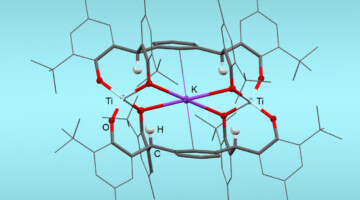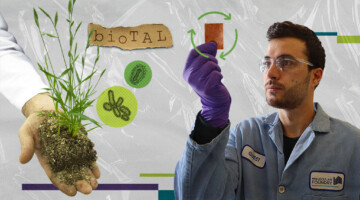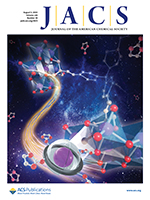Researchers learned how molecular structure relates to function in catalysts that convert atmospheric nitrogen into more usable forms at room temperature and pressure. The work could lead to greater energy efficiency in producing nitrogen-based products such as fertilizer where large-scale industrial processes are unfeasible. Read more »![]()
![]()
Engineered π⋯π interactions favour supramolecular dimers X@[FeL3]2(X = Cl, Br, I): solid state and solution structure
Intermolecular interactions drive the formation of biological supramolecular architectures, inspiring the design of artificial supramolecular assemblies and molecular machines. Here, the engineering of supramolecular interactions allows selection of a self-recognition process of dimerization over one of helicate-cage formation. Read more »
Engineering Lipophilic Aggregation of Adapalene and Adamantane-Based Cocrystals via van der Waals Forces and Hydrogen Bonding
Adamantanes are emerging building blocks for active pharmaceutical ingredients. In this work, we sought to understand how systematic modification of the hydrophobic cage in adamantanes could result in changes to crystal packing in single and multicomponent organic solids. Read more »
A Cleaner Way to Produce Ammonia
A cavity made from linked rare-earth metals, such as zirconium and titanium, can convert abundant molecular nitrogen (N2) into useful nitrogen compounds, including ammonia or tris(silyl)amines, at room temperature. Read more »
A Bio-Inspired Metal-Organic Framework for Capturing Wellhead Gases
Burning of natural gas at oil and gas wells, called flaring, is a major waste of fossil fuels and a contributor to climate change. In this work, researchers synthesized and characterized a metal-organic framework that uses biomimetic chemistry to convert wellhead gases into economically valuable feedstocks for petrochemical products. Read more »
Shaping the Water-Harvesting Behavior of Metal–Organic Frameworks Aided by Fine-Tuned GPT Models
The reticular design and synthesis of metal–organic frameworks enable the structures to be engineered at an atomic level, allowing their properties to be harmoniously harnessed. AI-assisted design of building units can reduce human labor in the enumeration and search for possible structures, thereby accelerating the discovery of MOFs. Read more »
Accelerating Sustainable Semiconductors With ‘Multielement Ink’
Scientists have developed “multielement ink”—the first “high-entropy” semiconductor that can be processed at low temperature or room temperature. The new semiconducting material could accelerate the sustainable production of next-gen microelectronics, photovoltaics, solid state lighting, and display devices. Read more »
Making Renewable, Infinitely Recyclable Plastics Using Bacteria
Scientists engineered microbes to make the ingredients for recyclable plastics—replacing finite, polluting petrochemicals with sustainable alternatives. The new approach shows that renewable, recyclable plastics are not only possible, but also outperform those from petrochemicals. Read more »
A New Material System for Mixed-Plastic Recycling
Scientists have designed a new material system to overcome one of the biggest challenges in recycling consumer products: mixed-plastic recycling. Their achievement will help enable a much broader range of fully recyclable plastic products and brings into reach an efficient circular economy for durable goods like automobiles. Read more »
Ionic Conduction Mechanism and Design of Metal–Organic Framework Based Quasi-Solid-State Electrolytes
This cover image demonstrates the critical role of the solvent in the ion motion of intrinsically anionic metal–organic framework (MOF)–based quasi-solid-state electrolytes (QSSEs). Using hybrid theoretical and experimental approaches, we have identified solvent-assisted hopping as the dominant pathway for Li+ conduction in such materials, exemplified by MOF-688. Read more »








